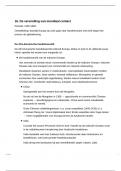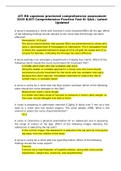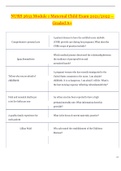Samenvatting
Samenvatting Child Psychopathology, Third Edition, ISBN: 9781462516681 Ontwikkelingspsychopathologie (PSMOB-3)
- Instelling
- Rijksuniversiteit Groningen (RuG)
Een uitgebreide samenvatting van het boek dat wordt gebruikt voor Ontwikkelingspsychopathologie: een ontwikkelingsperspectief. De samenvatting is uitgebreid en daardoor ook erg geschikt om te gebruiken bij een open-boek tentamen. De inhoud sluit goed aan bij de oefenvragen
[Meer zien]














